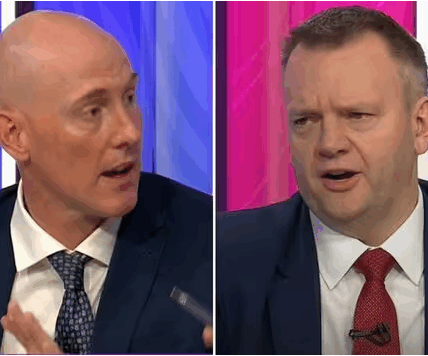PM makes more changes after portraits of William Ewart Gladstone and Margaret Thatcher were also moved

Sir Keir Starmer has taken down portraits of Elizabeth I and Sir Walter Raleigh that were on display in Downing Street, The Telegraph can reveal.
The paintings of the last Tudor monarch and the famous explorer of the Americas were previously on the walls of a room used for prime ministerial meetings with world leaders.
Both have now been replaced with scenes from Crivelli’s Garden, a mural by Dame Paula Rego, the late Portuguese-born artist, whose work focuses on “strong and courageous women”.
It comes after Sir Keir faced critism when it emerged he had also removed portraits of William Ewart Gladstone and Margaret Thatcher.
On Sunday night, Downing Street said the changes to the artwork had actually been drawn up under the previous government.
A spokesman said: “The change of artwork is long planned, since before the election, and is timed to mark 125 years of the Government Art Collection.”

The Biblical figures are depicted in a painting by Dame Paula Rego, the late Portuguese artist
Both Elizabeth I and Raleigh have been criticised over their links to the slave trade. The artwork of Elizabeth I that has been taken down is known as the Ditchley Portrait, and was painted in 1592 by Flemish artist Marcus Gheeraerts the Younger.
It depicts her standing on a globe with her feet on Oxfordshire, and she is shown in a farthingale against a backdrop of storm clouds parting to give way to sunshine.
The portrait was produced for Sir Henry Lee two years after his retirement as the Queen’s Champion, a position he held for more than three decades.
According to the National Portrait Gallery, it is likely to mark “an elaborate symbolic entertainment” that Lee organised for the monarch after she forgave him for moving in with Anne Vavasour, his mistress.
Elizabeth I was an early supporter of English involvement in the slave trade and gave permission to the adventurer Sir John Hawkins to fly the royal flag on his ships.
Hawkins took 300 African slaves across the Atlantic to sell in Spanish colonies on his first voyage. The queen invested money and ships in Hawkins’s expeditions, and would go on to give him his own coat of arms.

The portrait of Raleigh appears to have been restored and created by an unknown artist. It depicts him wearing chainmail, with a neutral expression on his face.
Raleigh was a colonialist who attempted to establish a British settlement in North Carolina, only to ultimately fail in doing so because of sour relations with Native Americans.
The paintings have been replaced either side of a fireplace in Downing Street by two of Rego’s works – Study for Crivelli’s Garden and Study for Crivelli’s Garden (The Visitation). Crivelli’s Garden is one of Rego’s best-known works, and the National Gallery said last year that its focus was on “strong and courageous women”.
Study for Crivelli’s Garden is an acrylic painting produced between 1990 and 1991, which shows a woman praying as a second woman appears to wield a weapon behind her.
It was painted for display in the National Gallery’s restaurant and depicts a number of scenes from stories and myths in the Bible, with female characters featuring prominently throughout.
Study for Crivelli’s Garden (The Visitation) is a retelling of the Visitation in the Bible, in which the Virgin Mary, who was pregnant with Jesus , visited Elizabeth, her cousin, who was pregnant with John the Baptist. Elizabeth can be seen grabbing Mary’s upper hand with one hand as she uses the other to cover her mouth.

Sir Keir’s decision to replace the portraits of Elizabeth I and Raleigh drew criticism from his political opponents on Sunday.
Robert Jenrick, the Conservative leadership hopeful, said: “Elizabeth I was one of our most iconic female leaders. She’s a hero I love to talk to my daughters about.
“Stripping her portrait from Downing Street – alongside Walter Raleigh’s – seems to betray a strange dislike of our history by this Labour Government.”




